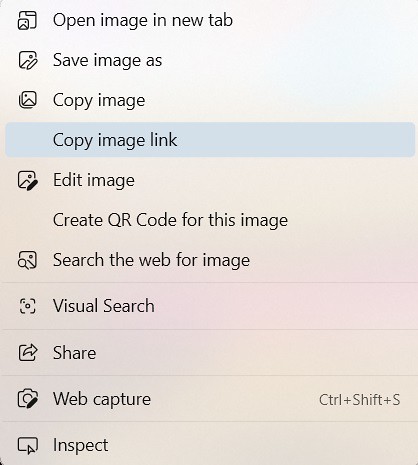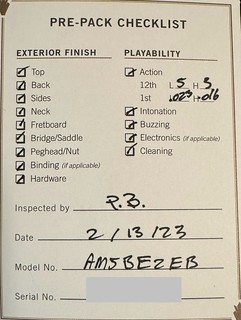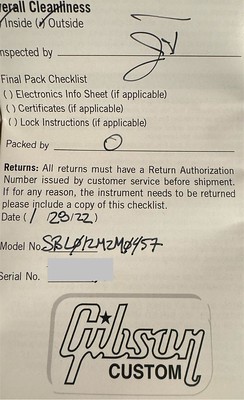-
Posts
5,008 -
Joined
-
Last visited
-
Days Won
10
Posts posted by Dave F
-
-
9 minutes ago, jedzep said:
Well, maybe, Dave. But if you plunked a Taylor down in your mix, wonder what your ear would tell you. Mine say cheap build equals cheap tone. If one always drove a Rambler, a Chevy Vega would seem like a nice ride.
These stories of GC comparisons say more about GC than Martin.I have been down the Taylor rabbit hole. It’s like they have no soul. I’ve had the top of the line models and after the honeymoon they left and went back home.
My favorite tone wood is rosewood in a Martin D forward shifted guitar. Looks wise and comfort wise, Gibson wins out. I’ve been through a lot of Gibson rosewood guitars looking for that tone that I like. It took a while but I have two I like. A NL RW and an SJ RW.
And I agree that your comparisons can only be based on what you’ve been exposed to. I know my exposure to good vintage guitars is limited. I could see me getting hold of the right guitar and getting rid of everything else. Until then, I’ll keep looking and holding on to the herd. -
I think the best sounding guitar I’ve owned was a Martin D41 Special. I reluctantly sold it because my hand was having issues with the neck. I’ve liked the sound of every 40’s series Martin that I’ve played.
As far as the Martin 000 body, I think it is a great, comfortable body shape and I’ve had a few. I currently have a Custom Shop 000-14 all mahogany. I like the tone of an all mahogany. Besides the Martin, I have a Gibson ‘42 LG1 all hog and a 2016 Gibson L00 all hog.
All a matter of taste. -
Sounds great!
-
I've taken standard Gibson 2-ply and made one before

-
The number one thing I love about Gibson’s are their Standard sunburst. The darker the better. So I am not a good person to ask. I’ve had the triburst but personally I would prefer it on a Les Paul.
-
Per Vintage Guitars Info - Gibson flattop vintage guitar collecting (guitarhq.com) it looks to be a 1954 SJN. First year for natural, last year before pearl inlay and most acoustics went to 20 frets in '55,
Definitely not original tuners.
- 1948 Southern Jumbo specs:
- new style "Gibson" gold block logo.
- 1949 Southern Jumbo specs:
-
"top belly" bridge (belly towards soundhole, as used on most other flat tops models of this period). This style of belly bridge is better, as the belly does not interfere with the vibration of the top between the bridge and the endpin.
- 1954 Southern Jumbo Natural (SJN) specs:
- natural finish offered and called the "SJN" ("N" for natural top).
- 1955 SJN/Country Western specs:
-
SJN natural finish now called the "Country Western." Pearl "Gibson" peghead logo replaces gold silkscreen, and pearl crown peghead design added to this model (both SJN and Country Western seen with pearl peghead attributes in 1955.)
-
I was surprised at the bridge plate. When compared to the one on my Historic '42 SJ Banner (shown), it looks like it was subjected to some heat and oozed glue out of the locating hole and sides.
I have a Nick Lucas that I sent back to Montana to have the bridge plate replaced and they did a great job but about a year later the bridge started to lift. I attributed to the bridge plate replacement. I had my luthier redo the bridge. He said he was a nervous wreck worrying about messing up the finish. He did a perfect job, only charged $65.

-
If you just paste a copy of the image link that you can get with your mouse right click, there is no size limit.

Looks like that bridge lifting did some finish and wood damage. I've never seen that. They usually lift up on the ends.
I wonder if the Thermally Aged process can contribute to this? I have a couple Gibsons with that process and I learned on the first one to kick up the humidification. I used to keep my guitar room around 45% and it started to show a finish split. I kicked it up to 50% and the issue went away. I've always babied new guitars for the first few years until the wood gets accustomed to being a guitar. I may have to give these aged ones a little more attention in the winter months for a few more years or keep them in the case during the winter

-
Sound port sounds like a good idea when playing for yourself. I do have a Ukulele with one and I can tell the difference.

-
I looked up the specs and it looks like a 1960 Fixed Bridge except for the finish. About a $1700 upgrade.
https://www.gibson.com/en-US/Acoustic-Guitar/ACCA45535/Heritage-Cherry-Sunburst -
I thought I would look at some of my model designations. One is obvious, the others? Glad I know what they are.




-
You're on your own there. Usually they can be deciphered but they often mis-label or make up new codes. Here's a list that was going around a few years ago.
Gibson codes
Over they years I've collected examples of these Gibson model numbers and codes. So, for those interested, I'm listing what I have collected below, decoded correctly for the most part - if you find something that needs correcting, please let me know. In 2014 Gibson started adding the year of manufacture to some of the model numbers it creates. I have a similar collection of model numbers and codes for the electric division - so I posted that too. And remember - Gibson is consistently inconsistent, so changes WILL occur in usage and form.
Formula - T1 T2 T3 T4 T5 FF HW Hand - T1=TypeOfGuitar, T2=YearOfManufacture, T3=MoreTypeInfo, T4=MoreTypeInfo, T5=MoreTypeInfo, FF=Finish, HW=Hardware, Hand=1(right)or2(left). T2-T5 appear only if needed.
In 1985 Gibson stopped labeling seconds, but some model numbers still end in 1. I think Gibson reassigned the number for the hand - 1=RH, 2=LH, and in Acoustic division: 3=RH with pick up, and 4=LH with pick up.
ACOUSTIC DIVISION -
These codes and model numbers have been used by Montana since the start. It's broken up into four parts. Well, five parts now because in 2014 Gibson start sticking in two digits for the year of manufacture.
Type (appears at the beginning of the model number) -
RS Round Shoulder J-45 type
SS Square Shoulder Hummingbird type
SJ Super Jumbo type
J8 J-180 Jumbo type
LS L-series small body type
AS Acoustic electric
AC Acoustic (no pickup)
Year of manufacture (code added to some model numbers in 2014):
14 - 2014
15 - 2015
16 - 2016
17 - 2017
18 - 2018
19 - 2019
Finish -
AT Antique Walnut (Natural finished top, Dark walnut stained back & sides)
AN Antique Natural (light toner added)
VS Vintage Sunburst ( Tobacco Burst) The new marketer has renamed this one the "sunset burst". Sigh....
CH Cherry (Dove red)
VCS Vintage Cherry Sunburst
HCS Heritage Cherry Sunburst (real hummingbird)
AE Antique Ebony (Black)Light toner for gold looking binding
EB Black (No Toner)(ebony)
TB Triburst
Hardware -
NH - Nickel Hardware
CH - Chrome Hardware
GH - Gold Hardware
Hand -
1=Right handed
2=Left handed
3=Right handed with pick up
4=Left handed with pick up
Recent Example: AC4518VSNH
AC45 - Acoustic (no pickup) J-45
18 - Manufactured 2018
VS - Vintage Sunburst
NH - Nickel hardware
ie: RS45TBNH1
RS45 - Round Shoulder J-45
TB - Tri-Burst finish
NH - Nickel hardware
1 - right handed
ie: RSSVVSNH1
RSSV - Round Shoulder Southern jumbo true Vintage
VS - Vintage Sunburst
NH - Nickel Hardware
1 - right handed
ie: SSHBHCSNH1
SSHB - Square shoulder Hummingbird
HCS - Heritage cherry sunburst
NH - Nickel Hardware
1 - right handed
ie: SSHCFMGH1
SSH - Square Shoulder Hummingbird
C - heritage Cherry burst
FM - Figured Mahogany
GH - Gold Hardware
1 - right handed
There are times when the number at the end of the hardware code is in reference to a lefty. This is usually a number 4. So a GH4 would be a gold hardware lefty.
If there is a number 3 at the end it is usually a guitar with a pick-up. Since they put pick-ups on most of their guitars now that number is no longer used.
A normally electric acoustic will be designated with a AS. The J-160E would be an AS16VSNH1.
From 1990 to 1995 all of the acoustic guitars were coded with a AC (acoustic) then the model number so a J-200 would be a AC20ANGH1
The acoustic electric guitars were noted- AS. AS16VSNH1 would have been a J-160-E.
1997 they made a change to different line designations. For example the J-200 was put into the "Historic Line". The code was HL20ANGH1.
1999 they made a big change in the price list and seperated the guitars into 5 lines they were:
J-200 Super Jumbo Line. They were designated SJ
J-45 Round Shoulder Line. They were designated RS
Hummingbird Square Shoulder Line. They were designated SS
J-180 Jumbo Line. They were J8
L-series Small Body Line They were LS
In 1993 they had a Starburst Studio and it was coded ASSFANGH1 Of course this guitar became the @ss fang.
~~~~~~~~~~~~~~~~~~~~~~~~~~~~~~~~~~~
ELECTRIC DIVISION -
Model number and code examples:
LPS6GTNH1 = LP(Les Paul) S(Standard) 6(6o's neck) GT(Gold Top) NH(Nickel Hardware) 1 (Not b stock or a 2nd - In 1985 Gibson stopped labeling seconds, but model numbers still end in 1.
I think Gibson reassigned the number for the hand - 1=RH, 2=LH, and in Acoustic division: 3=RH with pick up, and 4=LH with pick up.
LPSTWCCH1 = LP(Les Paul) ST(STudio) WC(Worn Cherry) CH(Chrome Hardware) 1(signifies that it is not b stock or a 2nd)
LPPCHBGH1 = LP(Les Paul) P(Premium or Plus - figured top) CHB(Cherry Heritage Burst, 2 or 3 letters for the finish) GH(Gold Hardware)
LPTDMSVCH1 = LP(Les Paul) TD(TraDitional) M(Mahogany top) S(Satin Vintage sunburst) CH(Chrome Hardware)
LPTDSZSHCH1 = LP(Les Paul) TD(TraDitional) S(1960) Z(Zebra coil pups) SH(Satin Honeyburst) CH(Chrome Hardware)
LPNSTDPTSCH1 = LP(Les Paul) N(Nashville) STD(STandarD) P(Plus) TS(Tea Burst) CH(Chrome Hardware)
LPNTDCBCH1 = LP(Les Paul) N(New) TD(TraDitional) CB (Chicago Blue) CH(Chrome Hardware)
*LPSCADBCH1 = LPS(Les Paul Standard) CA(Compund radius, Asymmetrical neck) DB(Desert Burst) CH(Chrome Hardware)
LPDCROCH1 - LP(Les Paul) DC(Double Cut) RO (ROot beer) CH(Chrome Hardware)
LPTLBNH1 - LP(Les Paul) T(Traditional) LB(Light Burst) NH(Nickel Hardware)
LPTP25FD9CF1 - LP(Les Paul) TP2(Traditional Pro 2) 5(50s neck) FD(Faded? Desert burst) 9(?) CF(Chrome Floyd rose)
LPSTDHSCHLH1 - LP(Les Paul) STD(STandarD) HS(Heritage cherry Sunburst) CH(Chrome Hardware) LH(Left Handed)
LPSFHBNH1 - Les Paul Standard Faded Honey Burst Nickel Hardware 1
LPJ-PBCH1 - Les Paul Junior Pelham Blue Chrome Hardware 1
~ For ES - "DT" Translation:
ESDSTBKCH1 - ES335 D (Dot) S (Satin) TB (TransBlack) CH (Chrome Hardware) 1 (right handed)
ESDP14CHNH1 - ES (Electric Spanish guitar series) D (Dot markers) P (Plain/Painted top) 14 (model year since 2014) CH (Cherry Heritage) NH (Nickel Hardware) 1 (right handed)
ESDP16GTNH1 - ES (Electric Spanish guitar series) DP (Dual Pickups) 16 (model year since 2014) GT (Gold Top) NH (Nickel Hardware) 1 (right handed)
DT = Dot (vs. block markers) per Gibson C/S as in ESDT
TD = Thinline Dual pups . . . . . . . . . . as in ESTD (or for an LP, TD = TraDitional)
T = Figured Top (don't know how Gibson derived that nomenclature) vs. P = Plain/Painted Top (??)
DT = Dot, Figured Top (??)
DP = Dual Pickups
DP = Dot, Plain/Painted Top (??)
.
-
 1
1
-
-
I have a few Gibson Custom Shop guitars that only have the ink stamp on the neck block. This is very common when they do Historic variations. Being a 50's reissue, that was the standard marking method in the 50's. Looks legit to me.
-
 1
1
-
-
27 minutes ago, PrairieDog said:
….. My DIF is maple, but somehow it seems more delicate, but that could just be I feel like it should be. I’ve never bashed it against anything to test it out 😎
I feel like the neck on my DIF could snap if I played it too hard.
-
 1
1
-
-
Hopefully we'll hear some Everly Brothers.
-
 1
1
-
-
Must be Friday
-
Your follow-up song can be 'Stubble Straw Fields Forever'
-
What about an acoustic with a tailpiece instead of bridge pins?
Or as in some of the Everly models, there are no pins?
Or as in the case of the J160, the sound hole is in the same location, but the bridge has been shifted forward by 1"?
I have questions 🙂
-
You have a line at the fwd side of the pins that I assume is the energy from pull of the string tension? Should that be at the energy of the vibration of the string contact point on the saddle?
-
On 1/8/2024 at 2:32 PM, Buc McMaster said:
I am now the proud owner of a 2003 Gibson J-185 of the sinister persuasion! Coming out of Tennessee, should arrive Friday. Woohoo!
The luthier I use worked on Tommy Shaw's J185 when he was in town a couple years ago

-
First of all, I'm not that good of a player but when I'm learning a new song I have to teach the fretting hand not the picking hand. The picking hand keeps the rhythm and timing for me while the fretting hand tries to play what it's learned without messing up.
-
 1
1
-
-
4 hours ago, Magnum Force said:
Ok, just looked it up and it it measures and looks every bit to be an LG1, as is ladder braced. Thanks for noting that difference.
Usually, but not always, the laddered braced LG1 did not have a center strip on the inside of the back. When you say ladder braced, you are talking about the underside of the top? All the backs are laddered.
-
I hope they make a lightweight version like the Fender Tone Master for us old farts that can't lug those heavy amps anymore.
-
34 minutes ago, G Man said:
I know you think its a J-45, and its kinda hard to tell from the pics, but it looks more like an LG of some sort.
I totally agree. The pictures aren't great, but I blew up the one of the front view and laid the bridge (6") across the body a couple times. With the choices being 16" or 14.5" or there about, it looks to be the 14.xxx"







Kluson Keystones
in Gibson Acoustic
Posted
I like the look. Some guitars just look better with them. I have a couple of them plus a spare set, but no double rings.